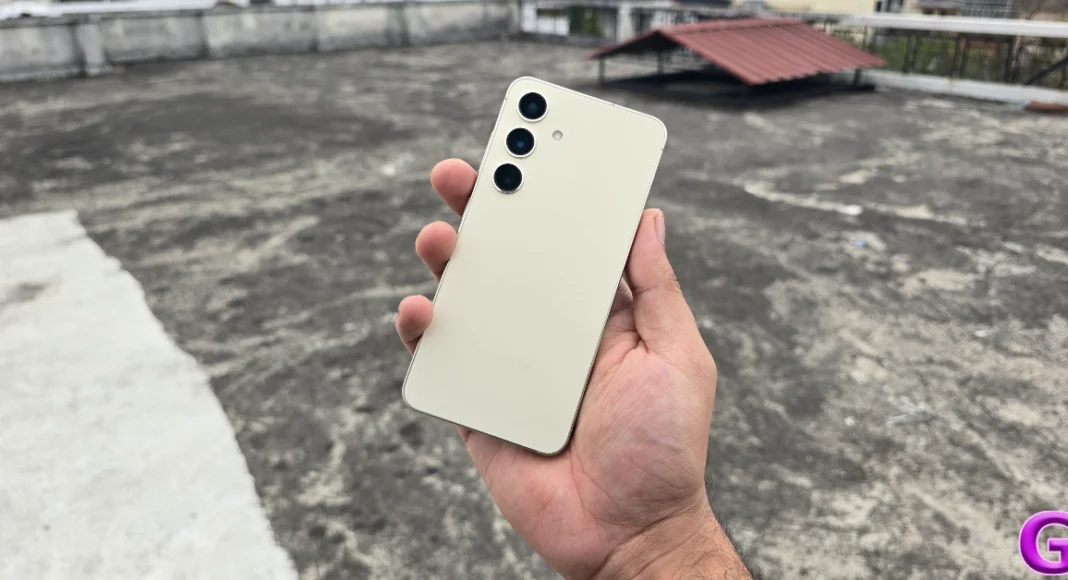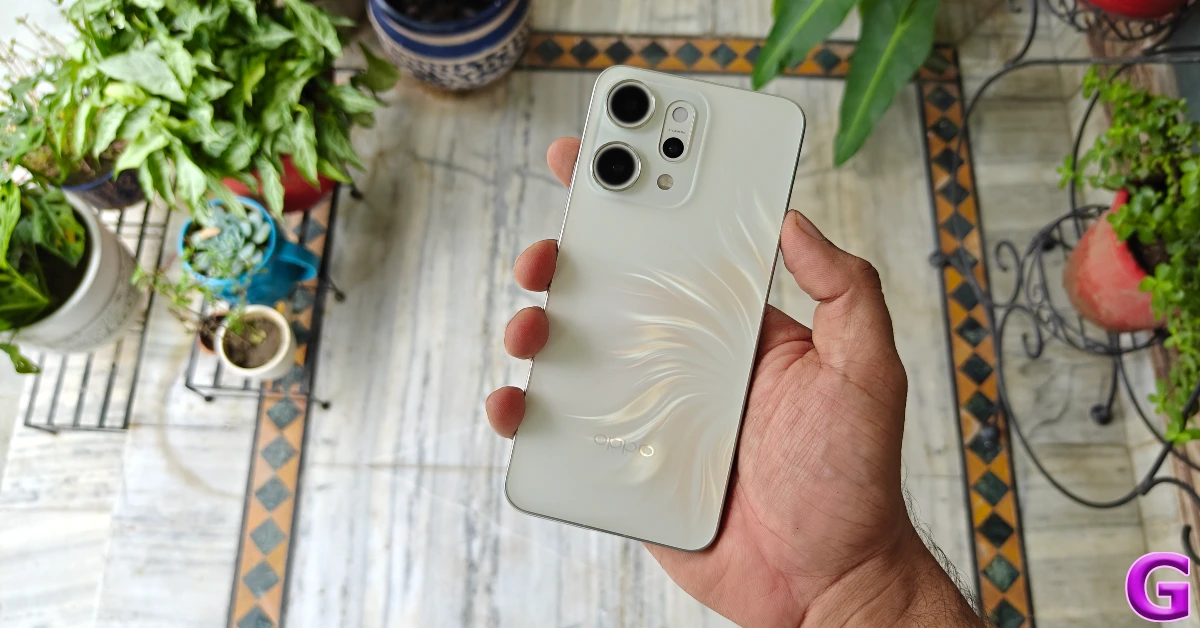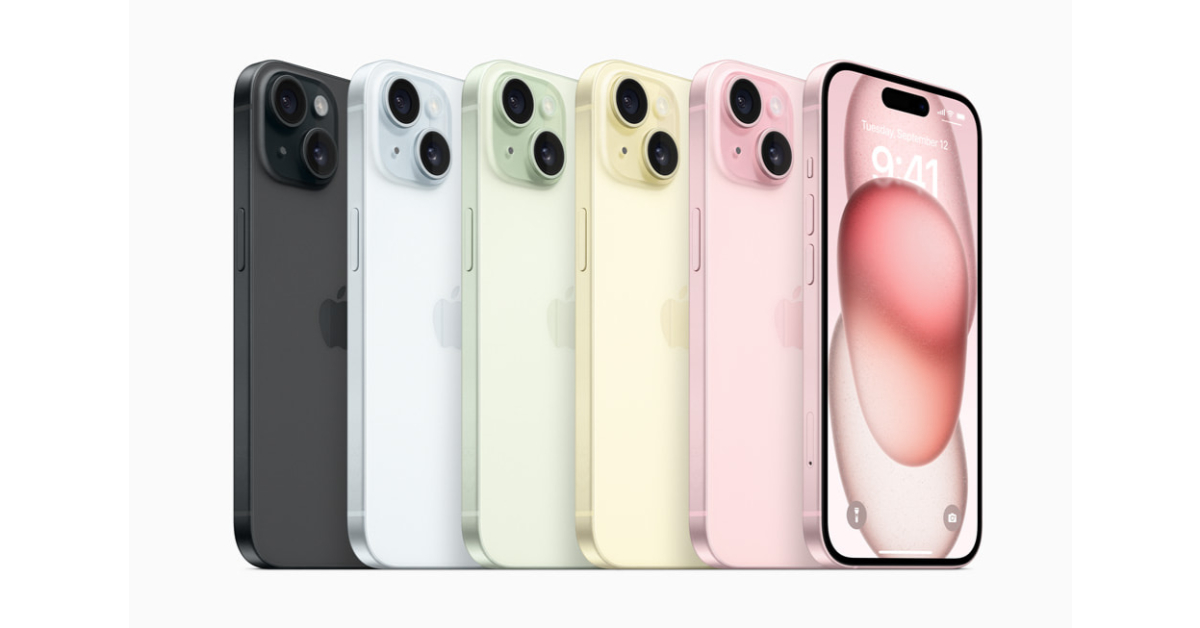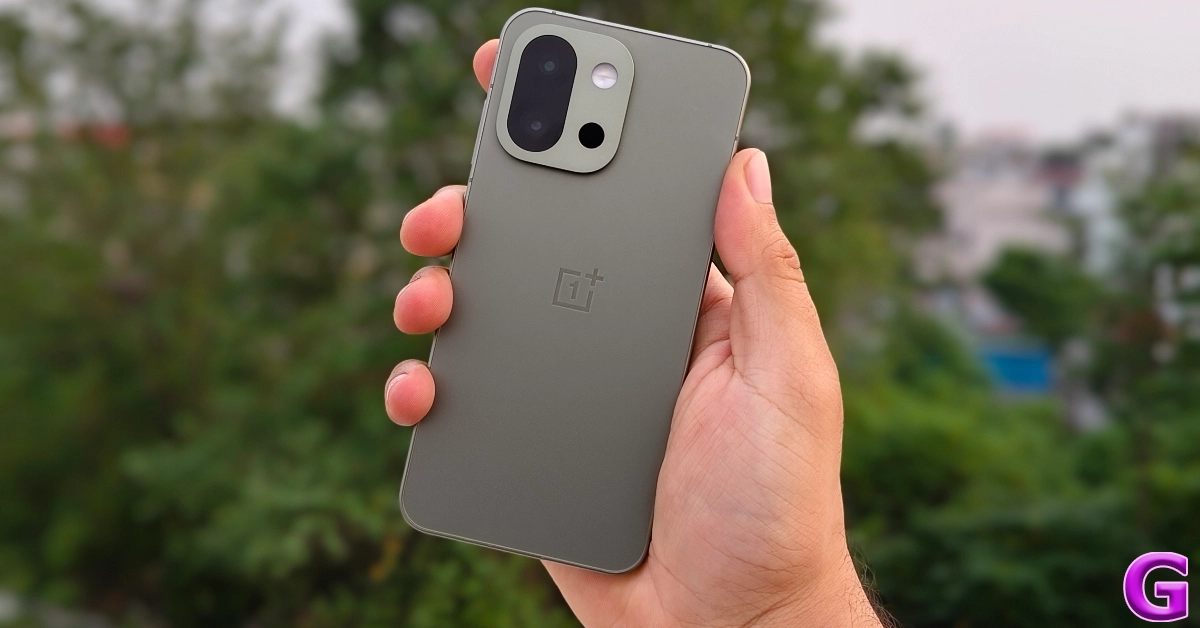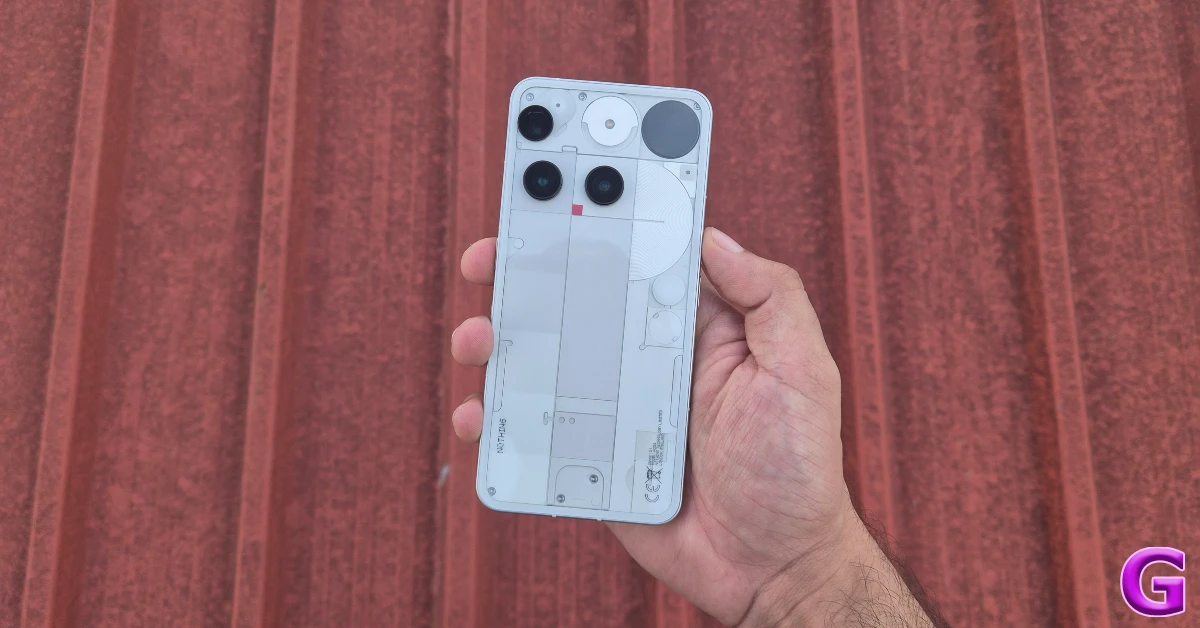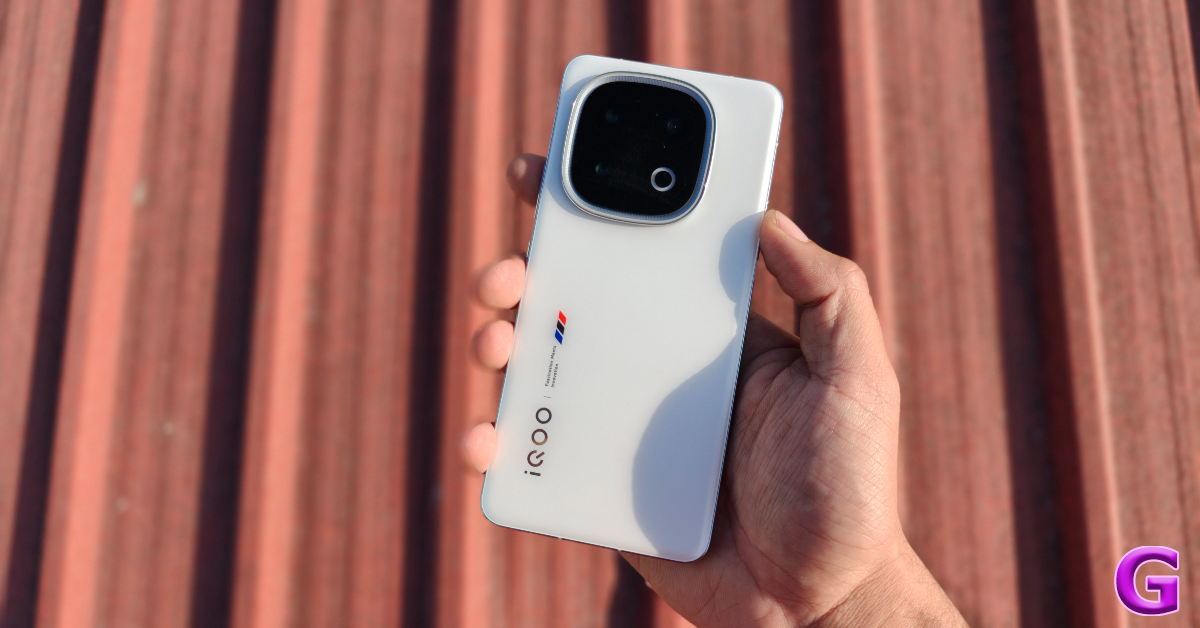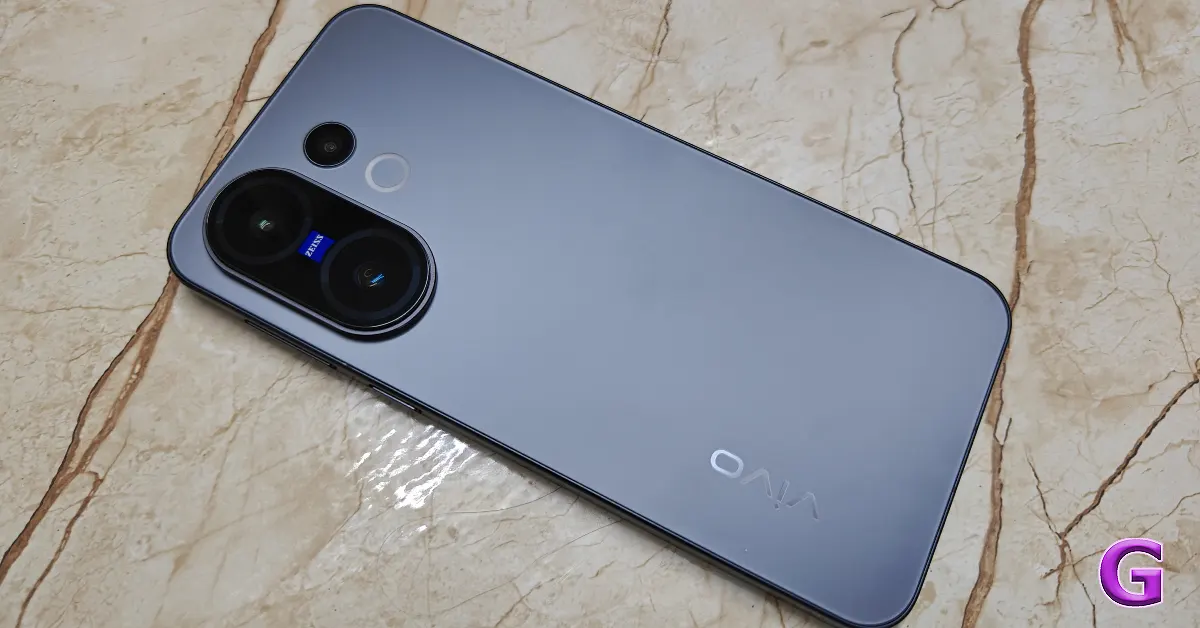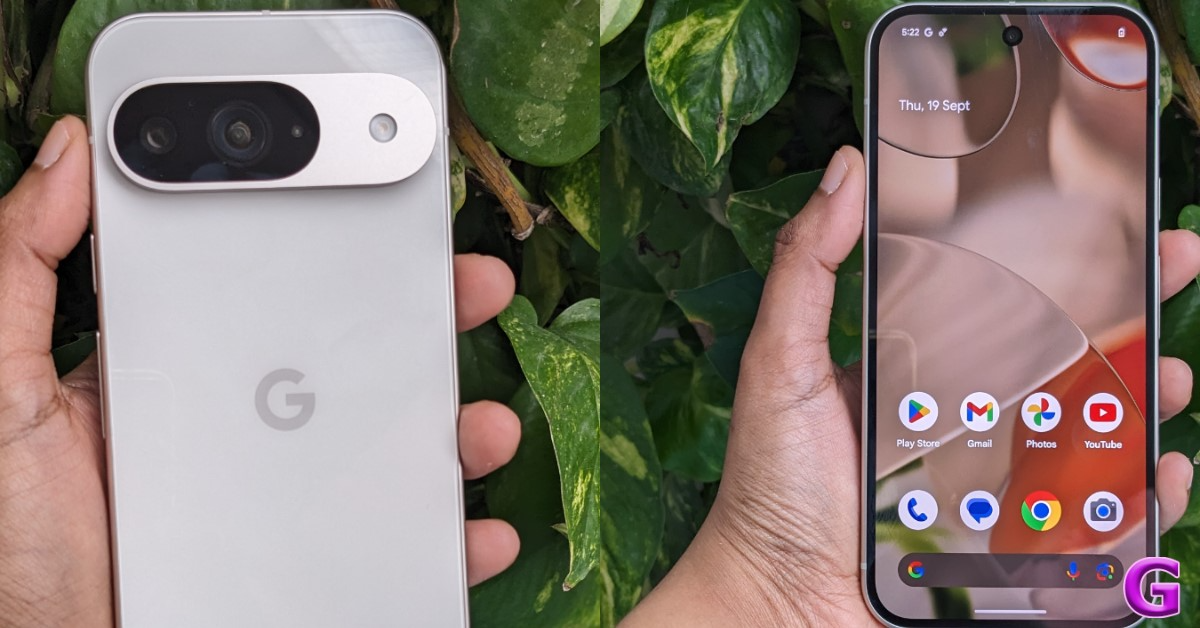The great thing about having an expansive smartphone market with a diverse range of OEMs is that you don’t always need to pay top money for a premium smartphone. The sub-Rs 50,000 price bracket has several smartphones that rock exquisite camera systems and are packed with powerful chipsets that won’t lose a step for the foreseeable future. If you’re in the market for a new device, here are the top 10 smartphones you can buy under Rs 50,000 in October 2025.
In This Article
Samsung Galaxy S24
Key Specs
| Display | 6.2-inch Dynamic LTPO AMOLED 2X |
| Chipset | Exynos 2400 SoC |
| RAM | 8GB |
| Storage | 128GB, 256GB |
| Battery | 4,000 mAh |
The vanilla model in last year’s Samsung Galaxy S24 series is priced under Rs 50,000 right now. It packs the Exynos 2400 chipset under the hood and runs the Android 14-based One UI 6 OS out of the box. Its 6.2-inch Dynamic LTPO AMOLED 2X display has a 120Hz refresh rate and peak brightness of up to 2,600 nits. The triple rear camera array houses a 50MP primary shooter, a 12MP ultrawide lens, and a 10MP telephoto lens with 3x optical zoom. The 4,000mAh battery pack supports 25W wired and 15W wireless charging. Read our review of the Samsung Galaxy S24 to learn more about the smartphone.
Pros
- Fluid display
- Good cameras
- Wireless charging
Cons
- Mediocre processor
Realme GT 7 Pro
Key Specs
| Display | 6.78-inch LTPO AMOLED |
| Chipset | Snapdragon 8 Elite |
| RAM | 12GB, 16GB |
| Storage | 256GB, 512GB |
| Battery | 5,800 mAh |
Realme’s flagship phone in India is powered by the Snapdragon 8 Elite chipset. OS duties on this device are handled by the Android 15-based Realme UI 6. Its 6.78-inch LTPO AMOLED display has a 120Hz refresh rate and can reach a peak brightness of 6,500 nits. The camera island on the back panel houses a 50MP primary shooter, a 50MP telephoto lens with 3x optical zoom, and an 8MP ultrawide lens. The 5,800mAh Si/C battery pack supports 120W fast charging. Read our Realme GT 7 Pro review to learn more about its everyday performance.
Pros
- Powerful processor
- Bright display
- Affordable
Cons
- Lacks wireless charging
Oppo Reno14 Pro
Key Specs
| Display | 6.83-inch AMOLED |
| Chipset | MediaTek Dimensity 8450 SoC |
| RAM | 12GB |
| Storage | 256GB, 512GB |
| Battery | 6,200 mAh |
The portrait master Oppo Reno14 Pro has a very exciting camera system. All four cameras utilise 50MP sensors. The rear camera array comprises a primary shooter, an ultrawide lens, and a telephoto lens with 3.5x optical zoom. Powering this device is the MediaTek Dimensity 8450 chipset. The 6.83-inch AMOLED display has a 120Hz refresh rate. The 6,200mAh battery pack supports 80W wired and 50W wireless charging. Read our review of the Oppo Reno14 Pro to learn more about its photography skills.
Pros
- Good cameras
- Cool design
- IP69 rated
Cons
- Mediocre chipset
iPhone 15
Key Specs
| Display | 6.1-inch Super Retina XDR OLED |
| Chipset | A16 Bionic |
| RAM | 6GB |
| Storage | 128GB, 256GB, 512GB |
| Battery | 3,349 mAh |
If you’re an Apple enthusiast, the vanilla variant of the iPhone 15 is a great deal under Rs 50,000. It is powered by Apple’s in-house A16 Bionic processor and runs iOS 17 out of the box. Its 6.1-inch Super Retina XDR OLED display has a 60Hz refresh rate and can reach a peak brightness of 2,000 nits. The dual camera array on the back panel consists of a 48MP primary shooter and a 12MP ultrawide lens. The 3,349mAh battery pack supports USB-C and wireless charging.
Pros
- Nice design
- Good cameras
- Powerful processor
Cons
- No telephoto lens
OnePlus 13s
Key Specs
| Display | 6.32-inch AMOLED |
| Chipset | Snapdragon 8 Elite |
| RAM | 12GB |
| Storage | 256GB, 512GB |
| Battery | 5,850 mAh |
OnePlus’ compact flagship phone is powered by the Snapdragon 8 Elite chipset. Its 6.32-inch LTPO AMOLED display has a 120Hz refresh rate and can reach 1,600 nits in High Brightness Mode. The smartphone runs the Android 15-based OxygenOS 15 out of the box. The dual rear camera setup comprises a 50MP primary shooter and a 50MP telephoto lens with 2x optical zoom. The 5,850mAh battery pack supports 80W wired charging. Check out our review of the OnePlus 13s to find out how it performs in day-to-day use.
Pros
- Compact form factor
- Powerful processor
- Big battery
Cons
- No ultrawide lens
Google Pixel 9a
Key Specs
| Display | 6.3-inch P-OLED |
| Chipset | Google Tensor G4 |
| RAM | 8GB |
| Storage | 128GB, 256GB |
| Battery | 5,100 mAh |
The ‘A’ series model in the Pixel 9 lineup is powered by Google’s in-house Tensor G4 chipset. Its 6.3-inch compact P-OLED display has a 120Hz refresh rate and can reach a peak brightness of 2,700 nits. Its compact form factor is balanced out by its thickness of 8.9mm. This allows the smartphone to accommodate a 5,100mAh battery pack. This battery pack supports 23W wired and 7.5W wireless charging. The bump caused by the camera panel on the back panel is negligible. It comprises a 48MP primary shooter and a 13MP ultrawide lens. Read our Google Pixel 9a review to learn more about the smartphone.
Pros
- Compact form factor
- No camera bump
- Wireless charging
Cons
- No telephoto lens
Nothing Phone (3)
Key Specs
| Display | 6.67-inch OLED |
| Chipset | Snapdragon 8s Gen 4 |
| RAM | 12GB, 16GB |
| Storage | 256GB, 512GB |
| Battery | 5,500 mAh |
Nothing’s new flagship phone after a 2-year-long hiatus is a statement piece. It ditches the LED Glyph lighting for a Glyph matrix on the back panel, while retaining its see-through design. The 6.67-inch OLED display has a 120Hz refresh rate and can reach a peak brightness of 4,500 nits. The Snapdragon 8s Gen 4 chipset powers this device. The rear camera array comprises a 50MP primary shooter, a 50MP ultrawide lens, and a 50MP periscope telephoto lens with 3x optical zoom. The 5,500mAh battery pack supports 65W wired and 15W wireless charging. Read our Nothing Phone (3) review to learn more about its performance.
Pros
- Cool design
- Clean OS
- Smooth display
Cons
- Standard pricing is high
iQOO 13
Key Specs
| Display | 6.82-inch LTPO AMOLED |
| Chipset | Snapdragon 8 Elite |
| RAM | 12GB, 16GB |
| Storage | 256GB, 512GB |
| Battery | 6,000 mAh |
If you’re a big gamer, the iQOO 13 is the flagship phone for you. It is powered by a combination of the Snapdragon 8 Elite SoC and iQOO’s in-house Supercomputing Chip Q2. The 7K Ultra VC cooling system on this phone keeps its internal temperature in check. The 6.82-inch AMOLED display has a 144Hz refresh rate and can reach a peak brightness of 4,500 nits. The triple rear camera panel comprises a 50MP primary shooter, a 50MP ultrawide lens, and a 50MP telephoto lens with 2x optical zoom. The 6,000mAh battery pack supports 120W charging. Check out our iQOO 13 review for a deeper dive into its gaming performance.
Pros
- Clean design
- Powerful processor
- Big battery
Cons
- Lacks wireless charging
Vivo X200 FE
Key Specs
| Display | 6.31-inch AMOLED |
| Chipset | MediaTek Dimensity 9300+ |
| RAM | 12GB, 16GB |
| Storage | 256GB, 512GB |
| Battery | 6,500 mAh |
Vivo’s compact flagship is powered by the MediaTek Dimensity 9300+ chipset. It runs Android 15-based Funtouch 15 OS out of the box. The 6.31-inch LTPO AMOLED display has a 120Hz refresh rate and can reach a peak brightness of 5,000 nits. The triple rear camera array comprises a 50MP primary shooter, a 50MP telephoto lens with 3x optical zoom, and an 8MP ultrawide lens. The 6,500mAh battery pack supports 90W wired charging. To learn more about its photography skills and general performance, read our review of the Vivo X200 FE.
Pros
- Compact
- Fluid display
- Good cameras
Cons
- Lacks wireless charging
Google Pixel 9
Key Specs
| Display | 6.3-inch OLED |
| Chipset | Google Tensor G4 |
| RAM | 12GB |
| Storage | 128GB, 256GB |
| Battery | 4,700 mAh |
The vanilla model from last year’s Google Pixel 9 series is still a good buy. It is powered by the Tensor G4 processor and runs Android 14 out of the box. It has been promised 7 major OS upgrades. Its 6.3-inch OLED display has a 120Hz refresh rate and can reach a peak brightness of 2,700 nits. The rear camera panel houses a 50MP primary shooter and a 48MP ultrawide lens. The 4,700mAh battery pack supports 27W wired and 15W wireless charging. Read our review of the Google Pixel 9 before making the purchase.
Pros
- Nice design
- Good cameras
- Stock Android OS
Cons
Read Also: Vivo V60 Review: Setting the benchmark in camera performance for midrange phones
Final Thoughts
These are the top 10 smartphones priced under Rs 50,000 in October 2025. If you have more room in your budget, check out the best premium phones you can buy right now. If you have any questions, let us know in the comments!


